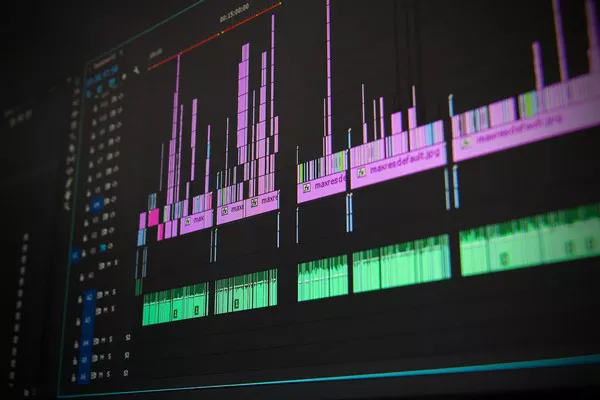What are the five elements of Chinese music? This question unveils the rich tapestry of a musical tradition that has evolved over thousands of years. Chinese music is not merely a collection of notes and melodies; it is a reflection of the country’s history, culture, and philosophical principles. In this exploration, we delve into the five fundamental elements that constitute the essence of Chinese music, each contributing to the unique and harmonious soundscape that defines this ancient musical tradition.
**1. Yin and Yang in Melody: Pitch and Tonality in Chinese Music
To understand what the five elements of Chinese music are, we must first explore the concept of pitch and tonality. Yin and Yang, the ancient Chinese philosophy of balance, finds expression in the musical realm through the interplay of high and low pitches. The pentatonic scale, consisting of five notes per octave, forms the foundation of Chinese melodies. This distinct tonal structure not only sets Chinese music apart but also reflects the harmonious equilibrium of Yin and Yang in the natural world.
Chinese instruments, such as the guqin and erhu, are meticulously crafted to produce the nuanced tones required by this unique scale. The musical heritage embraces the delicate balance between contrasting elements, creating a soundscape that resonates with the philosophical essence of Yin and Yang.
2. Rhythmic Precision: The Pulse of Chinese Music
What are the five elements of Chinese music without rhythm? Rhythmic precision is a cornerstone of Chinese musical tradition, providing the heartbeat that sustains the melodic and harmonic elements. Traditional Chinese music often adheres to specific rhythmic patterns, each carrying its own cultural and historical significance.
The concept of “lu,” or the rhythmic pattern, is crucial in understanding Chinese percussion instruments’ role. The guzheng, a zither-like instrument, and the pipa, a plucked string instrument, contribute to the intricate rhythmic layers. From the stately pace of court music to the lively beats of folk tunes, the rhythmic diversity within Chinese music showcases the nation’s rich cultural tapestry.
3. Harmony in Diversity: Timbre and Texture in Chinese Music
Timbre, the unique quality of a musical sound, and texture, the interweaving of various sounds, play pivotal roles in defining the sonic landscape of Chinese music. The diverse array of traditional Chinese instruments contributes to the rich tapestry of timbral possibilities, allowing for a nuanced expression of emotions and cultural narratives.
From the sonorous tones of the bamboo flute to the resonant vibrations of the yangqin (hammered dulcimer), each instrument brings its own timbral signature to the ensemble. The Chinese orchestra, with its meticulous arrangement of instruments, exemplifies the harmonious coexistence of diverse timbres, creating a musical mosaic that transcends time and captivates audiences with its emotive depth.
See Also: How Do You Listen to and Appreciate Music?
4. Cultural Narratives: Musical Forms and Genres in Chinese Tradition
What are the five elements of Chinese music without acknowledging the myriad musical forms and genres that have evolved over centuries? Chinese music is a vibrant reflection of the nation’s diverse cultural heritage, with each region contributing its unique styles and expressions. From the refined court music of the imperial era to the spirited folk tunes passed down through generations, the musical landscape of China is as diverse as its landscapes.
The traditional “silk and bamboo” ensemble, featuring string and wind instruments, represents the elegance of classical Chinese music. In contrast, regional opera traditions, such as Peking opera and Cantonese opera, showcase the fusion of music, drama, and visual arts. The exploration of these musical forms unveils the cultural narratives embedded in the melodies, narrating stories of love, heroism, and the human experience.
5. Philosophical Underpinnings: Daoism and Confucianism in Chinese Music
To grasp what the five elements of Chinese music truly encompass, one must delve into the philosophical underpinnings that shape its essence. Daoism and Confucianism, two prominent philosophical traditions in China, have profoundly influenced the philosophical and spiritual dimensions of Chinese music.
Daoist principles emphasize the connection between music and the natural world, viewing it as a means of harmonizing with the cosmic order. Confucianism, on the other hand, sees music as a tool for moral education and societal harmony. The interplay of these philosophies has sculpted Chinese music into a vessel for cultural preservation, spiritual expression, and the transmission of ethical values across generations.
Conclusion: A Harmonious Continuum
In conclusion, understanding what the five elements of Chinese music entail requires a holistic exploration of pitch, rhythm, timbre, musical forms, and philosophical underpinnings. Chinese music is a harmonious continuum that weaves together the threads of tradition, culture, and philosophy into a captivating soundscape. As we unravel the layers of this ancient musical tapestry, we discover not only the technical aspects that define Chinese music but also the profound cultural narratives and philosophical wisdom that resonate through its melodies. The five elements stand as pillars, supporting a musical tradition that continues to enchant and inspire audiences worldwide.
























